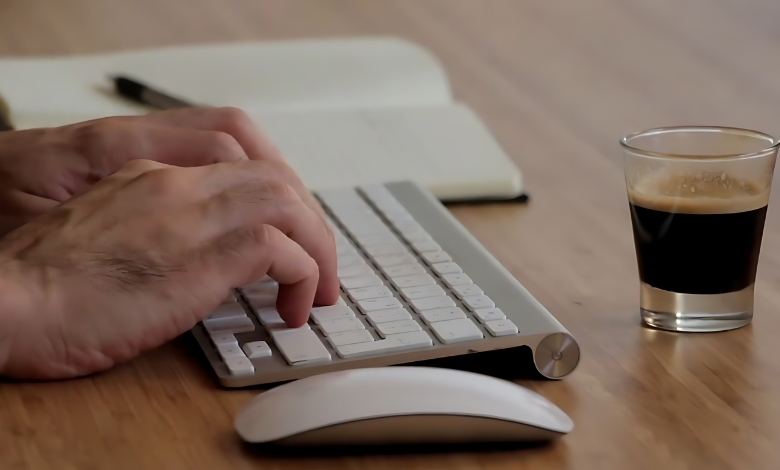What is workplace productivity? Learn its actual meaning and how to increase your productivity with our simple to follow recommendations.
As you might know if you have been following me for some time, I help people boost their sales as a digital marketer. In addition, my wife and I oversee a small bookstore with a great team that collaborates effectively.
One of my toughest challenges to date has been increasing team output. We tackle this by improving workplace productivity by use of several metrics and traditional methods. Since we implemented different plans, protocols, and technologies, our crew is now more productive. Moreover, the results are clear.
But does production just depend on efficiency? This article will define and explain real office productivity.
Article Breakdown
What Is Workplace Productivity? (Definition)

Workplace productivity measures, over a certain period of time, how effectively and efficiently a team or individual completes assignments and achieves goals. It all boils down to employing resources, processes, and tools as best you can to complete outstanding work on time.
Recall that working harder or longer hours does not equal productivity at work. Not just are output numbers significant. A productive workplace is one in which individuals feel inspired, involved, and capable of cooperating effectively to achieve shared goals.
Why Is Workplace Productivity Important?
Increases in productivity boost firm profits and typically benefit employees. Teams and individuals that are productive feel fulfilled and accomplished in what they do. Higher morale, better mental health, and job happiness can all come from this.
A productive workplace encourages:
- Teamwork
- Creativity
- Ongoing growth
Getting tasks done efficiently and hitting goals:
- Builds a great vibe at work
- Inspires everyone to give their best
Tracking Productivity at Work

Keeping track of productivity at work is crucial to see how efficiently tasks are getting done. By checking key performance indicators and setting clear goals, employees can stay focused on what needs to be finished.
Measuring productivity means looking at things like output per hour, project completion rates, and overall performance levels.
Additionally:
- Use time tracking software or project management tools to get insights into individual and team progress.
- Have regular check-ins and feedback sessions to spot potential bottlenecks and areas for improvement.
- Keep track of daily achievements and challenges to streamline workflow processes.
- Rely on a data-driven approach for informed decision-making.
- Boost overall productivity levels within the organization.
Effective tracking methods help keep everyone accountable and build a transparent team culture. They encourage taking ownership of tasks and projects, boosting motivation and leading to better results.
Improving Workplace Productivity

Improving workplace productivity calls for a comprehensive strategy that examines and maximizes several facets of the work environment.
Here are some doable practical tips to maximize your time and energy at work:
- List your everyday chores and rank them. All day attention and organization are maintained by this. Assign yourself particular objectives and track your development on a regular basis. Having well-defined goals will greatly increase your productivity.
- Recall to take breaks as well to prevent burnout and maintain high levels of focus. It can be quite beneficial to your productivity to take a few minutes away from your desk.
- Take care to keep distractions out of your workstation. Reduced interruptions from loud coworkers or continual email alerts can make a big difference in your productivity.
- The secret is to make self-care investments away from the office. Prolonged productivity greatly depends on preserving a good work-life balance.
Tools and Tips for Workplace Productivity

Applying practical tips and using the right workplace productivity tools can greatly increase productivity at work. Putting money into Asana or Trello project management software can help keep everyone on track and simplify work. Teams may stay organized and collaborate effectively with these tools.
Putting time-tracking software like RescueTime or Toggl into use can reveal how time is being spent all day long. Knowledge of where time is spent allows for changes to maximize output.
Every day should start with well-defined objectives and priorities to help keep one focused and guarantee that critical work is finished on time. Effective job management can be aided by making a daily to-do list or by applying the Pomodoro technique.
Including mindfulness techniques like stretching or meditation and encouraging frequent breaks can boost energy levels.
How Environment and Mindset Affect Productivity

Our environment helps us be quite productive in part. While a tidy and inspiring workstation can promote productivity and creativity, a disjointed and disorderly one can be distracting and difficult to focus on.
Raising output also calls for the right attitude. Good thinking, setting goals, and effective time management are cornerstones of a productive mindset at work.
How fast work is completed can be greatly influenced by keeping the surroundings full of fun and focused and by adopting a proactive mindset that is results-oriented.
Develop behaviors that assist your physical surroundings and mental condition if you want to produce as much as possible during the workday.
Workplace Distractions and Their Impact

Distractions at work can undermine your focus and productivity when least expected. From chatty coworkers to constant email alerts, these distractions might make it difficult for you to finish jobs on time.
One popular diversion is the appeal of social networking. Reacting to messages or checking your feeds might take up time and divert you from more pressing tasks. Boundaries and designated times for social media checking can help to minimize this distraction.
A further offender is multitasking, which, although first seeming to be successful, usually produces work of a poorer standard. Long-term results come from focusing on a task at a time and giving it your complete attention.
Workplace distractions also include noise levels in significant measure. Loud conversations or construction noises, whatever the cause of the disruption, moving about for a little while or wearing headphones will help you concentrate.
Eventually, productivity will rise and the workplace will be better if one is aware of these distractions and has countermeasures in place.
Lifestyle Choices That Influence Workplace Productivity
Our lifestyle decisions greatly affect our ability to work productively. Food, exercise, and sleep all directly affect our ability to focus and produce our best work.
A well-balanced diet strong in nutrients can provide the energy needed for sustained concentration during the job. Snacks like fruits, nuts, and yogurt might help keep one’s mind awake without the crash that follows sugary treats.
Frequent exercise increases brain blood flow, which improves both physical and cognitive function. Little walks or stretching breaks might help you feel more alive and productive.
Top priority for optimal performance at work is getting enough decent sleep. Efficiency of work is increased by an alert, creative mind. Establishing a consistent evening routine can improve sleep quality generally and increase job efficiency.
Wrapping Up
Working more intelligently is just as important to workplace productivity as working harder or longer hours. Our teams and ourselves can have more productive and satisfying work experiences if we define what workplace productivity means, track and improve it, use tools and advice to increase efficiency, be aware of the atmosphere and mindset at work, reduce distractions, and make good lifestyle decisions. Recall that little adjustments over time can result in dramatic increases in production.



